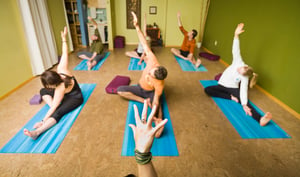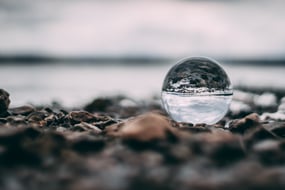Seasonal Affective Disorder (S.A.D.) interferes with life for 1 out of 20 Americans every winter. Up here in Alaska, where we get only 4-5 hours of low daylight around the winter solstice in December, the rate is more like 1 in 10. Our daylight hours go to extremes seasonally, and for many of us, so do our moods.
Light affects our brains
Although we’re used to thinking of S.A.D. as a wintertime problem, it’s not the cold that causes the change — it’s the lack of light. Light determines how our brains regulate sleep, stimulates our appetites, and can profoundly affect our moods.
In the northernmost of the “Lower 48 states,” though the change in light isn’t as extreme as it is in Alaska, it’s drastic enough to trigger seasonal depression. Especially in areas like Seattle, where the fewer hours of daylight are so often accompanied by dull gray skies.
Our bodies respond to darkness
Up north in winter, we sleep more, crave fatty foods, and generally become homebodies. It’s the body’s natural response to darkness.
But if there’s a clear shift in your mood in the fall and you return to your usual self in spring, the change in light may affect you beyond just winter blues. Don’t just write off your mood if:
- You’re not getting work done
- Your mood affects your home life
- You find yourself withdrawing from your normal activities.
How do you know if it’s S.A.D.?
Seasonal Affective Disorder is an official diagnosis, but it’s not a black and white “either you have it or you don’t.” S.A.D. can be experienced in varying degrees, but will most likely show itself with several of these indicators:
- fatigue
- no to low energy
- stress
- trouble getting up in the morning
- feeling like you’re gaining weight
- not wanting to engage in physical activity
- feeling down
Talk to your provider
It’s important to talk with your provider about significant mood changes -- not just to determine whether you’re depressed. Mood changes can also have a physical cause like low iron or thyroid disease.
Your provider will ask you questions and perhaps order additional tests that will help them determine the severity of S.A.D. and what course of treatment to take.
There are effective treatments for seasonal depression
We want to treat seasonal depression before it gets bad. Fortunately, there are a variety of treatments that work:
Light therapy
The least invasive and most effective treatment for S.A.D. is light therapy. Your provider will prescribe the right intensity and length of time to be exposed to a special light. Even just 20 minutes twice a day has been shown to boost energy and improve your mood.
Aerobic exercise
Exercise is a terrific mood booster. The great thing about it is that you can start where you are -- any amount of activity is better than none. The trouble comes when you’re too depressed to engage in physical activity.
Anti-depressants
We’re cautious about prescribing anti-depressants, but there are times when it’s necessary. For some patients, a low dose during only the darkest months of the year keeps them from sinking deeper into depression.
Make an appointment
If you’re experiencing changes in mood that are affecting your health or lifestyle, call your Vera Whole Health clinic and schedule an appointment. Your provider or coach can help you deal with darkness in a healthy way this winter.
Sign up
Join our email list to receive the latest open positions, Vera Careers news, and more.





